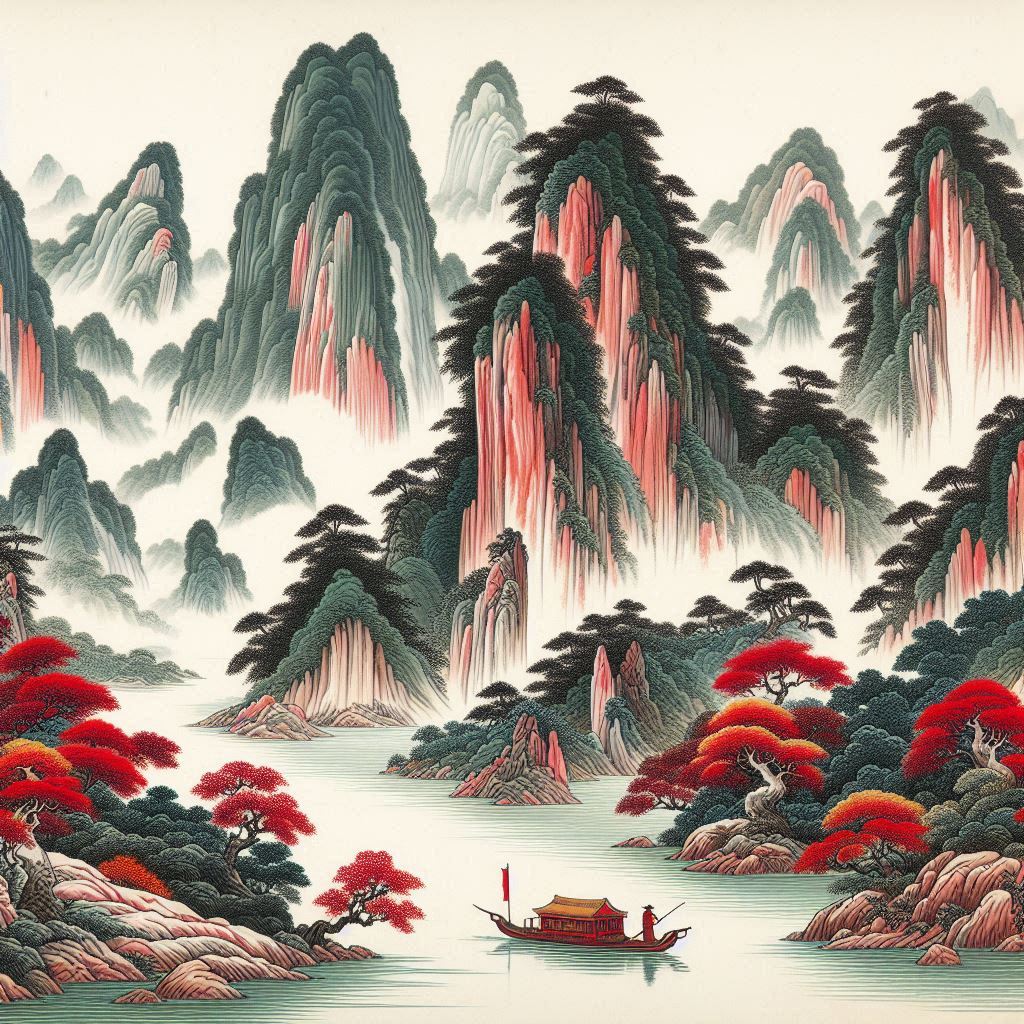Introduction to the disharmony
Major symptoms:
- chills
- runny nose with profuse clear mucus
- general muscle pain
- stiff neck
- headache
- fever
In traditional Chinese medicine there are two types of "wind attack". They are termed “wind-cold” and “wind-heat”. The word “wind” is noticeably present in both.
Wind has highly penetrating property. It invades the body through the shoulders, neck and back, but could also invade through any unprotected (uncovered) surface area. When the wind penetrates the body it "hides under the skin", causing symptoms like chills andfever(1)(3), stiff neck, body pain(2), headache. This type of "wind attack" or wind invasion is called “wind-cold” because the symptoms that manifest have predominantly “cold" nature – chills (sensation of feeling cold), stiffness and pain (cold has constricting property), runny nose with profuse clear mucus (cold makes fluids overflow).
The treatment principle for "wind-cold" is to "chase the wind out of the skin" which is achieved through inducing perspiration. It is said “When (the disease) is in the skin, sweating will bring it out.”(4)
Major Chinese herbs
Herbs with warm temperature and acrid property can promote perspiration and are used to treat “wind-cold”. Maybe the most famous in this class of herbs is Ma Huang (Herba Ephedrae). Ma Huang is warm, acrid and bitter herb that opens the pores and expels wind. It also promotes the movement of Lung Qi, which often gets blocked after “wind-attack” (the Lung is the uppermost organ in the torso that first meets the external pathogen). Ma Huang is also a diuretic and benefits edema(4)(5). It is also beneficial for asthma as it contains ephedrine(5). The herb is slightly toxic, and should be taken with caution.
Gui Zhi (Ramulus Cinnamomi Cassiae) is cinnamon twig. Its moving property unblocks the channels and smooths the flow of Yang (the body’s warming principle) and the flow of blood. It is mostly used in the cases when the sweating was not helpful to expel the wind from the skin and the wind proceeded invading the body, entering the muscle layer. Symptoms for this next level of “wind-cold” are profuse sweating, fever, body pain(4). The major distinction in the usage of Ma Huang and Gui Zhi is that the former is used when there is no sweating and sweating needs to be induced, while the latter is used when there is sweating and the pathogen has evolved.
Some other major Chinese herbs for the treatment of wind-cold are Jing Jie (Herba seu Flos Schizonepetae Tenuifoliae), which also has the property to vent rashes; Gao Ben (Rhizoma et Radix Ligustici) – an herb that benefits headache in this stage; Xin Yin Hua (Flos Magnoliae) – also used for any nasal and sinus conditions(4). Fang Feng (Radix Ledebouriella) – a major "wind" herb translated as “guard against wind”(4) or "wind-preventing herb" because it can prevent wind disharmony and stroke(5).
Healing foods
Hot and spicy foods promote perspiration and are appropriate for treating “Wind-Cold”. The warm temperature of these foods generally warms the body and dispels cold, while the acrid/spicy property expels the wind from the skin by inducing sweating.

To unlock the rest of this article select "Yes, I want to learn!" below.

Food therapy is the most economical and non-toxic biochemical approach to health and disease. Food is something we continuously use to sustain our lives. Learning what foods are healing (and what disruptive) for each condition has the potential to convert every meal into a form of therapy.
YS
(1) Deng Liangye, Gan Yijun, He Shuhui, Ji Xiaoping, Li Yang, Wang Rufen, Wang Wenjing, Wang Xuetai, Xu Hengze, Xue Xuiling, Yuan Jiuling (1987). Chinese Acupuncture and Moxibustion. China: Foreign Languages Press
(2) Maciocia, Giovanni (1989). The Foundations of Chinese Medicine. Edinburgh: Harcourt Publishers Limited
(3) Yang Weiyi, Meng Fanyi, Jiang Yuanan(2002). Diagnostics of Traditional Chinese Medicine. Beijing: Beijing University of Chinese Medicine and Pharmacology
(4) Benski, Dan & Gamble, Andrew (1993). Materia Medica, Revised Edition. Seatle: Eastland Press, Incorporated
(5) Lu, Henry (2005). Chinese Natural Cures. New York: Black Dog & Leventhal Publishers, Inc.
(6) Pitchford, Paul (2002). Healing with Whole Foods. Berkeley: North Atlantic Books
(7) Holmes, Peter (1998). The Energetics of Western Herbs. Boulder: Snow Lotus Press, Inc.
Related Articles:
How the Climatic Factor Wind Affects Health
Herbs That Dispel Wind - Dampness
Note: This site and its services are to consumer educational use only. Nothing contained in this site is or should be considered, or used as a substitute for medical advice, diagnosis or treatment. We advise users to always seek the advice of a physician or other qualified professional with any questions regarding personal health and medical condition. Please read our Disclaimer









